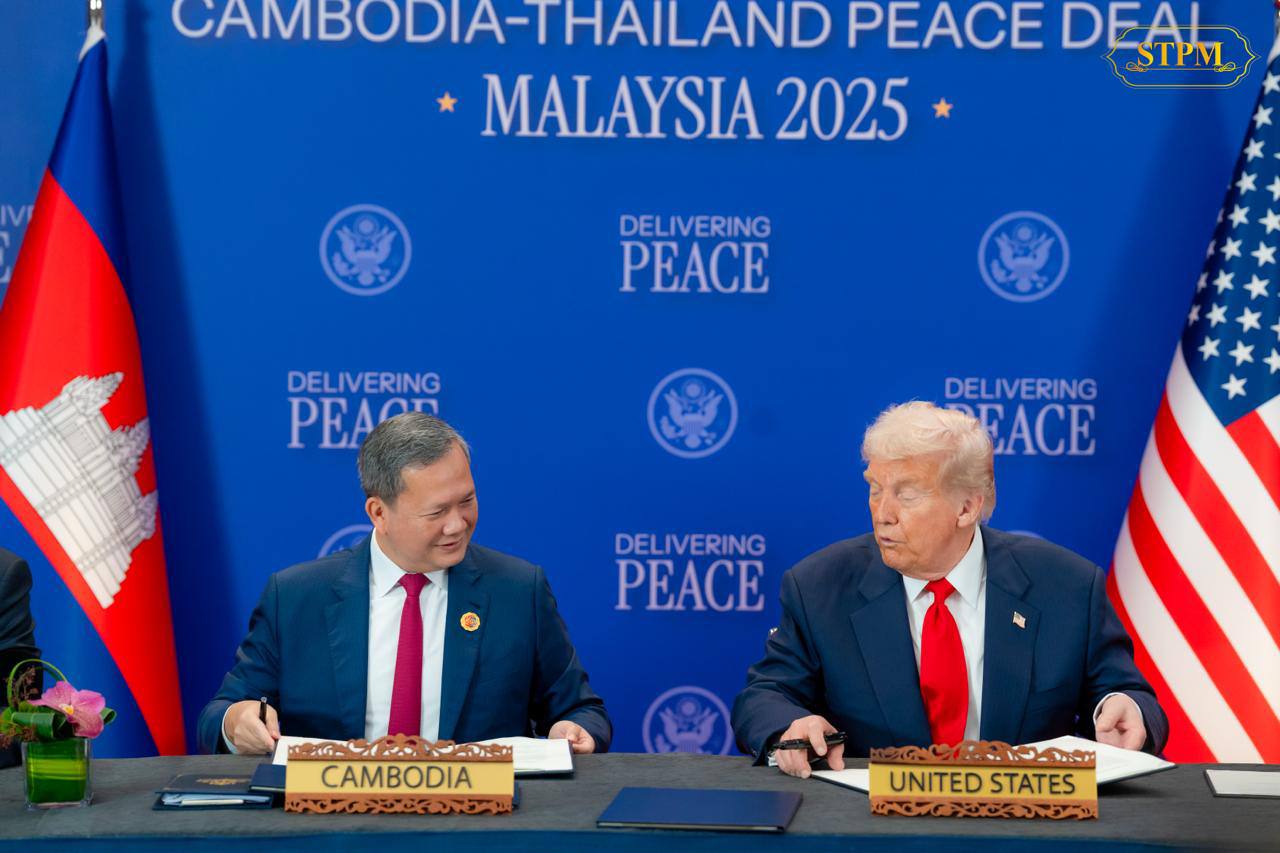PHNOM PENH / WASHINGTON D.C.: A highly encouraging announcement resonated across the globe on the afternoon of October 27, 2025, as several major international news outlets reported that U.S. President Donald Trump had granted formal approval to exempt specific goods imported from the Kingdom of Cambodia, as well as Thailand and Malaysia, from retaliatory tariffs, setting the rate at zero percent (0%).
This decision was formalized under new Reciprocal Trade Agreements signed with Cambodia and other key ASEAN nations, aimed at strengthening economic cooperation and diversifying global supply chains. The 0% tariff approval applies to products explicitly designated within the Annexes of the Agreement (Schedule 2 of Annex I), confirming a substantial trade concession from the U.S. administration.
What This Means for Cambodia’s Trade
The 0% tariff approval on select Cambodian goods represents a significant diplomatic and economic leap for the nation, achieved after rigorous negotiations with the U.S. side. Previously, the U.S. administration had imposed varying rates of reciprocal tariffs on almost all imports from countries not covered by specific free trade agreements.
- Increased Competitiveness: The granting of a 0% tariff rate will dramatically boost the price competitiveness of the specified Cambodian goods in the U.S. market—the country’s single largest export destination. This makes Cambodian products more attractive to American buyers compared to goods from countries still facing higher retaliatory duties.
- Investor Confidence: The news is also a strong positive signal to foreign investors seeking stable tariff conditions for production destined for the American market. It reduces trade uncertainty and solidifies Cambodia’s position as a reliable manufacturing and sourcing hub.
The Reciprocal Trade Agreement Framework
According to documents released by the White House and the U.S. Trade Representative (USTR), the 0% tariff approval is part of a broader “Agreement on Reciprocal Trade” between the United States and Cambodia. The core aspects of this framework include:
- U.S. Tariff Relaxation: The U.S. will apply a revised reciprocal tariff rate on Cambodian goods, with the overall rate not exceeding 19% and offering the 0% rate for a list of prioritized, mutually agreed-upon goods.
- Cambodian Duty Elimination: In return, Cambodia has agreed to eliminate tariffs (0%) on nearly all imported goods originating from the United States. This move by Cambodia is a major unilateral concession aimed at addressing the bilateral trade imbalance.
Outlook and Next Steps
This shift in tariff policy is not just a trade victory for Cambodia; it is also a signal of improved diplomatic and economic relations between the two nations. The Cambodian government has indicated its intention to continue negotiations to secure further tariff reductions on other major sectors, including garments, footwear, and textiles, which collectively provide over one million jobs in the country.
Economic experts anticipate that the 0% tariff measure will provide a significant tailwind for Cambodian exports during the final quarter of 2025 and contribute positively to the nation’s economic growth into the following year.

